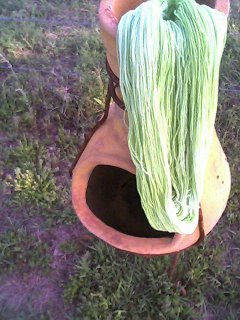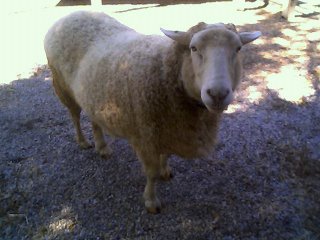Lime-ish

It is most definitely lime and not the lovely toothpastey shade of mint you see here. I think I 'm going to try for some better pictures and then put this and the purple one on Ebay. I would love to knit me up some lime socks with one of the patterns from Vintage Socks (and I kind of have one picked out), but I don't see me getting around to it any time soon. If I was going to keep one of these, it really should be the purple anyway since I don't have much that would match this green. I guess I could dye something....
And speaking of dyeing, Oakley started out as an indigo plantation (I know, I mentioned it already). I'm really curious about the indigo dyeing process. I've read a little bit about it, but never actually seen it done. There were some 'stray' indigo plants around the plantation grounds, and I was temtpted, but I think I'll settle for a cutting of Mom's. How much does it take to dye about four ounces of yarn anyway?
So I was wondering just what did they spin in Louisiana in the 1800's? It's not as if we have an abundance of sheep running around these parts needing to have thier wool spun so that it can be knitted into warm woolens. (Quick now Jethro, put those mittens on so you don't...drip sweat on my clean floor?) Okay, so maybe they did cotton and flax or something.
It's neat to hear from other knitters in the comments! Especially those rare Louisiana knitters! I've never seen a live one in the wild. I thought they all moved away to where the yarn is anything but acryllic.


1 Comments:
I suppose they spun flax, and cotton. I've seen an old 'homestead' type display in S. Carolina with flax growing in the garden. And in an old cabin was a huge loom. It was all locked up, so I had to just ogle it through the windows.
I like the purple yarn better, even though green is a favorite of mine--you should see my lime green porch!
I may not be the only knitter in La., but you are one of the very few La. blogging knitters.
Post a Comment
<< Home